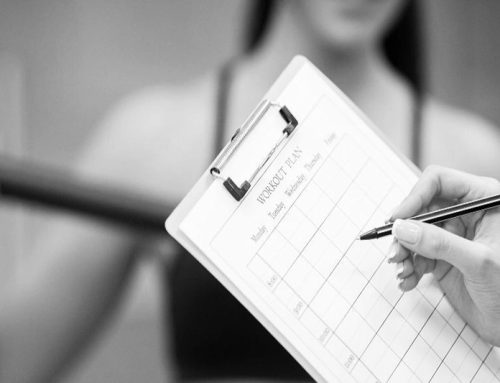Building muscle while in a calorie deficit or burning fat while eating in a calorie surplus are fitness topics that spark endless curiosity. Most people assume you have to be in a calorie surplus to gain muscle and in a deficit to lose fat. But, in recent years, the conversation has evolved, suggesting that these traditional rules might have some flexibility. So, is it a fact or myth that you can build muscle while consuming fewer calories and lose fat with more? Let’s dive in.
Understanding Caloric Balance: The Basics
Before exploring whether you can bend the rules, it’s essential to understand the concept of caloric balance. Calories are simply units of energy you get from food, and your body uses these calories to perform all sorts of functions—from breathing to running a marathon. When you consume more calories than you burn, the excess is stored as fat, creating a caloric surplus. On the flip side, when you consume fewer calories than you burn, you’re in a deficit, forcing your body to pull from its energy reserves (typically fat) to make up the difference.
Now, let’s explore if muscle growth can still occur when you’re in a calorie deficit and if fat loss can happen during a surplus.
Muscle Growth in a Caloric Deficit: Possible but Challenging
Traditionally, muscle growth is associated with a calorie surplus. Why? Building muscle requires energy, and in a surplus, your body has all the resources it needs to focus on growth. In a deficit, though, your body has less energy to spare, which can make muscle-building tougher but not impossible.
Research and anecdotal evidence suggest that building muscle in a deficit is possible under certain conditions. For example:
- You’re New to Strength Training: If you’re just starting out, your body is likely to respond quickly to resistance training, even if you’re in a deficit. These “newbie gains” can allow you to build muscle while losing fat, as your body is highly receptive to the new stimulus of lifting weights.
- You Have a High Body Fat Percentage: Individuals with more stored body fat can leverage that energy to fuel muscle-building processes, even if they’re not consuming a surplus of calories.
- You’re Focusing on High Protein Intake: Protein plays a critical role in muscle repair and growth. Consuming adequate protein in a deficit helps your body hold onto existing muscle tissue and, in some cases, build new muscle fibers. Aiming for about 1 to 1.2 grams of protein per pound of body weight is generally a good target.
- You’re Training Smart: In a deficit, training effectively is essential. Prioritize compound movements (like squats, deadlifts, and bench presses) that engage multiple muscle groups, and focus on progressive overload (gradually increasing the weight or reps). These strategies stimulate your muscles more effectively, encouraging growth even when energy is limited.
Fat Loss in a Caloric Surplus: Yes, It’s Possible
The idea of losing fat in a calorie surplus might sound counterintuitive, but there are situations where it’s possible. The key is to manipulate your macronutrient intake and optimize your training. Here’s how:
- Caloric Surplus Doesn’t Mean Huge Surplus: When we talk about a caloric surplus for muscle gain, we’re often only talking about a slight increase—100-300 calories above your maintenance level. Keeping the surplus small can help you build muscle without gaining significant fat.
- Eating the Right Macronutrient Ratios: Macronutrient composition plays a huge role here. A slight caloric surplus that’s protein-rich can lead to muscle gain without adding a lot of fat. Protein is thermogenic, meaning your body burns more calories digesting it than carbs or fats, which could help prevent fat gain in a surplus.
- High-Intensity Interval Training (HIIT): Adding HIIT to your routine while in a surplus can help burn additional calories and promote fat loss. HIIT workouts increase your metabolic rate even after you’ve finished working out, allowing your body to burn fat stores while benefiting from the extra calories for muscle growth.
- Active Lifestyle and Movement: Engaging in regular physical activity outside the gym can also make a difference. Walking, cycling, or taking the stairs can add up to significant calorie expenditure. In a mild surplus, these additional activities help prevent excess fat storage.
Practical Tips for Building Muscle in a Deficit and Losing Fat in a Surplus
If you’re intrigued by these possibilities and want to give them a shot, here are some tips for getting started:
- Set Clear, Realistic Goals: If you’re trying to build muscle in a deficit, understand that gains will be slower. Similarly, if you’re aiming to lose fat in a surplus, be realistic about the fact that you might gain some muscle as well.
- Track Your Progress: Pay attention to both the scale and your physical performance in the gym. Use a mirror, take measurements, or take photos to see changes beyond just weight. Remember, muscle is denser than fat, so you might lose inches without seeing a big drop on the scale.
- Prioritize Sleep and Recovery: Both muscle growth and fat loss depend heavily on recovery. Aim for seven to nine hours of quality sleep, and give your muscles time to repair between workouts.
- Stay Consistent: Building muscle or losing fat under these circumstances requires discipline and patience. Stay consistent with your nutrition, workouts, and recovery routine.
- Work with a Coach: If you’re struggling, a fitness coach or trainer can provide guidance tailored to your specific body type, goals, and lifestyle.
Final Thoughts: Is It Really Fact or Myth?
So, can you build muscle in a deficit and burn fat in a surplus? The answer isn’t a definitive yes or no. It depends on factors like your training experience, body composition, and approach to nutrition. For some, building muscle in a deficit might be achievable only in the short term or during specific phases, while others might see moderate fat loss in a surplus by following strict guidelines.
It’s all about understanding your unique body and taking a flexible approach. Experiment and observe how your body responds, and remember that reaching your fitness goals doesn’t have to follow a rigid rule book.





